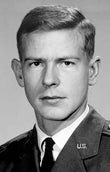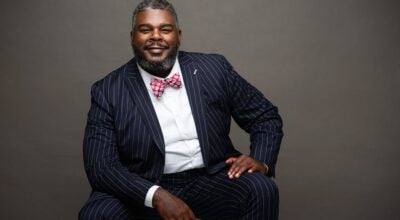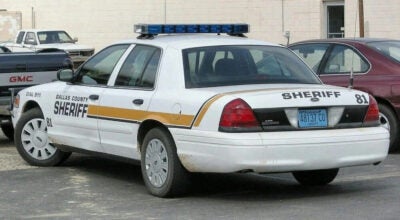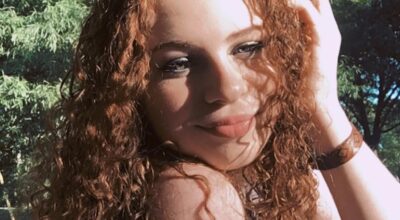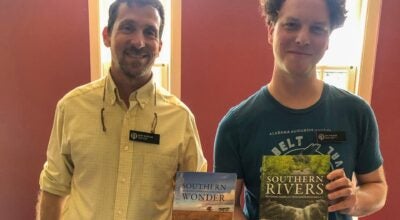We remember the service, the sacrifice
Published 11:43 pm Saturday, May 26, 2012
We are often faced with the tragic news of another American death on a foreign battlefield. How devastating for the family, friends and fellow compatriots, not to mention the tragic end of a life. It seems of late we are constantly in a state of shock at the tragic loss of another promising young life.
In the past decade, it begs to question, what are we accomplishing sacrificing our young men and women? Unquestionably patriotic and brave, they continue to volunteer and go into harm’s way risking life and limb at the behest of our nation. Even if there were no other reasons than duty, honor and courage, we should never forget their selfless sacrifices for the common good of all.
Craig Air Force Base in Selma, from 1940 until 1977, was in the business of providing young men for the war effort. Craig was an Undergraduate Pilot Training (UPT) base. As such, aspiring pilots and support cadre lived on base or in the city with their families. Dependent children of Air Force personnel attended public schools and adapted well into the fabric of life in Selma.
Many young pilots who came through Craig went on to combat duty in far away lands where some lost their life. The cycle included children of pilots and cadre who were stationed here volunteering for military service themselves and following in the footsteps of their parents.
There were 2.5 million men and women who participated in the Vietnam War. The average age of those serving was 22 years old. It became a very divisive war here at home.
Those who volunteered to serve, out of an obligation to serve our country during wartime, and those who were drafted into service, did not receive a hero’s welcome upon returning from duty. In fact, many were disrespected and treated almost as war criminals by a segment of our society. It was a very disturbing period in our history, hopefully, not to be duplicated ever again. The protestors were directing their misgivings against the very people entrusted to protect them from enemies both foreign and domestic.
Of the 58,272 names of killed in action on the Vietnam Memorial Wall, one is John Robert Bush, a graduate of Albert G. Parrish High, Class of 1961. He was a dependent child of an Air Force family at Craig Air Force Base.
Many of his classmates and friends remember him from school, and even today are still haunted at his demise.
Bush was a very personable young man who flourished at Albert G. Parrish High. He excelled in the classroom as well as extra curricular activities including performing in the marching band as drum major. Fellow band members Capt. Billy Morgan, Selma Police Department, John Coon, Jr. , (Air Force retired), presently Selma’s Cemetery Secretary, and Trot Vaughan, Selma land surveyor, as well as classmates Cheryl Newsome Watts, Bill Porter and others remember Bush from those days at Parrish High.
I think all would agree the thing that set Bush apart was his determination and zeal for whatever he undertook.
It is quite clear from testimony of his brother, Bill Bush (USMC 69-71), John enjoyed and excelled at being a Boy Scout. Bush elevated to Eagle Scout and was a member of the prestigious honor society Order of the Arrow (OA). In addition to his many achievements in scouting, he worked at Camp Tukabatchee (scout camp near Prattville) as a staff member of the Rifle Range Director, Jim Robertson.
Aside from scouting, honor societies, academic achievements and extra curricular activities at school, Bush dreamed of attending the Air Force Academy upon graduation from high school. Following graduation, he attended the University of Alabama until the late U. S. Senator John Sparkman of Alabama made the appointment.
Bush graduated from the Academy in 1966, earning paratrooper jump wings while a cadet. Shortly after graduation he and fiancée, Kathleen, were married. They had no children, but did acquire a playful puppy.
It was in Undergraduate Navigator Training (UNT) at Mather Air Force Base, Calif. that he met Tom Mangan.
A friendly competition developed between the two and they fed off each other’s accomplishments. Mangan said of Bush in a very moving tribute to his friend posted on the Vietnam Virtual Wall; “He was the most intense man I’ve ever known.”
After the two finished UNT, they moved on to Navigator Bombardier Training (NBT) mainly because there were no good assignments available at the time.
Bush finished first in the class, six tenths of a point ahead of his good friend Mangan.
Therefore, Bush got first choice of assignments and he chose the only fighter/bomber slot available. The slot was in the back seat of an Air Force F-4D fighter-bomber. Bush was one of the first ever non-pilot guys in the back seat (GIB) of the F-4D.
The two friends parted ways after assignments were selected and the next news of Bush was heard by Mangan the day after the Gulf of Tonkin incident on July 24, 1968.
On that fateful day July 24, 1968, two Air Force F-4D aircraft were dispatched out of Ubon Airfield, Thailand on a night armed reconnaissance mission.
The lead plane, call sign Oreo 1, was accompanied by Oreo 2 piloted by Cpt. Harley Hackett and weapons system officer 1st Lt. John R. Bush. After airborne, the mission changed to an enemy traffic interdiction along the “Black Route” just north of the North Vietnam port city of Dong Hoi.
The two Air Force F-4D’s were directed over the North Vietnamese Army traffic and made a run at the target. Pulling off the target, Oreo 1 radioed he had suffered damage from NVA antiaircraft artillery fire.
Shortly thereafter, Oreo 2 radioed that they too had damage and were on fire. The two damaged planes maneuvered out into the Gulf of Tonkin where Oreo 2, Hackett and Bush, reported having extinguished the fire. Oreo 1 was having difficulty keeping airborne so Oreo 2 directed them toward Da Nang Air Base, and then headed farther out to sea.
Soon thereafter, Oreo 1 determined the aircraft was too damaged to continue, radioed in an ejection and the two bailed out. They were later rescued at sea.
There was no other transmission from Hackett and Bush, but a Navy plane in the area reported seeing an F-4D plunge inverted into the Gulf of Tonkin. There were no reports of seeing parachutes from the downed plane, however there were some enemy fishing boats in the area.
Rescue teams scoured the area, but found no trace of the downed aircraft. They were listed as Missing in Action, but much later listed as Killed in Action/Body Not Recovered.
The slim hope that Hackett and Bush had been picked up by enemy fishing boats was all the families had to cling to. It wasn’t until after our departure from Vietnam and all the Prisoners of War were released with neither Hackett nor Bush among them that finality had to be faced.
Bush left behind a wife, Kathleen, a loving family and many friends. Recently, Kathleen — since remarried — recalled how proud he was of being an Eagle Scout and a member of the Order of Arrows. He had a passion for scouting and went at it much like other things in his short life.
His friend Mangan stated, “I still think of John Bush every day.”
R.I.P. brave patriot, thank God for your brief stay with us and the impact you made while here. We vow to never forget.


